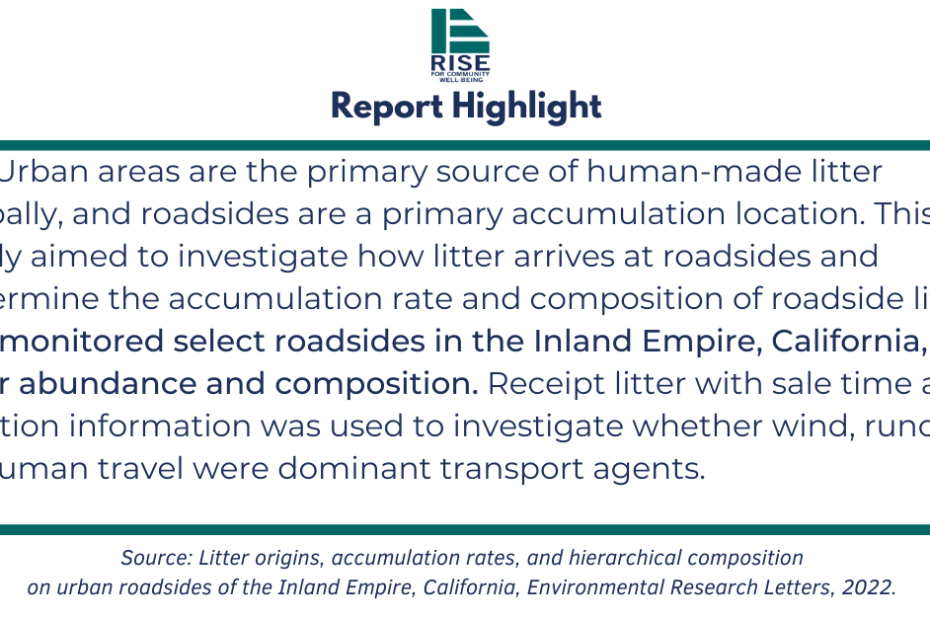Litter origins, accumulation rates, and hierarchical composition on urban roadsides of the Inland Empire, California
Authors: Win Cowger, Andrew Gray, Hannah Hapich, Jasmine Osei-Enin, Salvador Olguin Jr, Britney Huynh, Hinako Nogi, Samiksha Singh, Stanley Brownlee, Jonathan Fong, Trevor Lok, Gideon Singer, and Hoori Ajami
Publication: IOP Science Publishing, Environmental Research Letters (17)
Date: Janury 2022
Urban areas are the primary source of human-made litter globally, and roadsides are a primary accumulation location. This study aimed to investigate how litter arrives at roadsides and determine the accumulation rate and composition of roadside litter.
We monitored select roadsides in the Inland Empire, California, for litter abundance (count) and composition (material, item, and brand type). Receipt litter with sale time and location information was used to investigate whether wind, runoff, or human travel were dominant transport agents. Only 9% of the receipts could have experienced runoff, and wind direction was not correlated with receipt transport direction. However, human travel and receipt transport distances were similar in magnitude and distribution, suggesting that the displacement of litter from the place of purchase was predominantly affected by human travel. The median distance receipts traveled from the sale location to the litter observation location was 1.6 km, suggesting that most sources were nearby to where the litter was found. Litter accumulation rates were surprisingly stable (mean 40 349 (33 255–47 865) # km−1 yr−1 or 1170 (917–1447) kg km−1 yr−1) despite repeated cleanups and the COVID-19 stay-at-home orders. A new approach was employed to hierarchically bootstrap litter composition proportions and estimate uncertainties. The most abundant materials were plastic and paper. Food-related items and tobacco products were the most common item types. The identified branded objects were from the primary manufacturers (Philip Morris (4, 2%–7%), Mars Incorporated (2, 1%–3%), RJ Reynolds (2, 1%–3%), and Jack in The Box (1, 1%–3%)), but unbranded objects were prevalent. Therefore, identifiable persistent labeling on all products would benefit future litter-related corporate social responsibility efforts. High-resolution monitoring on roadsides can inform urban litter prevention strategies by elucidating litter source, transport, and accumulation dynamics.

